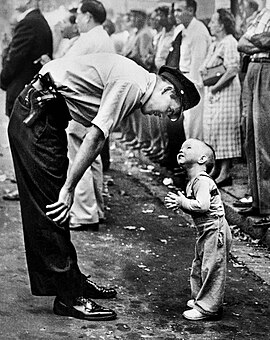
The Pulitzer Prizes are 23 annual awards given by Columbia University in New York for achievements in the United States in "journalism, arts and letters." They were established in 1917 by the will of Joseph Pulitzer, who had made his fortune as a newspaper publisher.

The Pulitzer Prize for Fiction is one of the seven American Pulitzer Prizes that are annually awarded for Letters, Drama, and Music. It recognizes distinguished fiction by an American author, preferably dealing with American life, published during the preceding calendar year.

Washington, D.C.'s Chinatown is a small, historic area of Downtown Washington, D.C. along H and I Streets between 5th and 8th Streets, Northwest. The area was once home to thousands of Chinese immigrants, but fewer than 300 remained in 2017. The current neighborhood was the second in Washington to be called “Chinatown” since 1931. Originally, the first Chinatown was built in the Federal Triangle on the south side of Pennsylvania Avenue some time after 1851, but was moved to the H Street area when a new federal building was built there. In 1986, a Chinese gate was built over H Street at 7th Street. By 1997, prominent landmarks such as the Capital One Arena, a sports and entertainment arena, occupied the area. The neighborhood is served by the Gallery Place station of the Washington Metro.
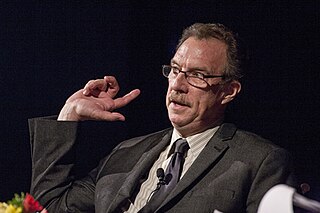
Lucian Perkins is an American photojournalist, who is best known for covering a number of conflicts with profound compassion for his photograph's subjects, including the war in Afghanistan, Kosovo and the 1991 Persian Gulf War. It has been said that Perkins has a developed style that not only portrays the hopes and weaknesses of the people in his photographs but in an unconventional manner. Perkins currently works at The Washington Post, where he has worked for the past 30 years and resides in Washington, D.C.
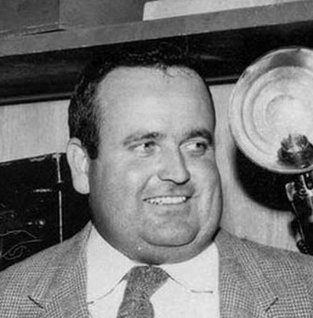
John Lyndon Gaunt also known as Jack was an American photographer who worked for the Los Angeles Times. He won the 1955 Pulitzer Prize for Photography for his photograph titled "Tragedy by the Sea". The image showed a man and a woman standing on a beach after their 19-month-old son disappeared.
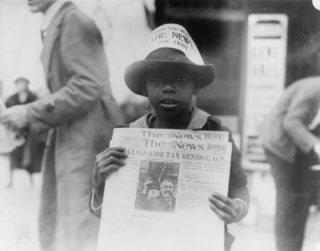
The Washington Daily News (1921–1972) was an afternoon tabloid-size newspaper serving the Washington, D.C., metropolitan area and published daily except Sundays.
The following are the Pulitzer Prizes for 1958.
Robert "Bob" Jackson is an American photographer. In 1964, Jackson, then working for the Dallas Times Herald, was awarded the Pulitzer Prize for Photography for his image capturing the murder of Lee Harvey Oswald by Jack Ruby.
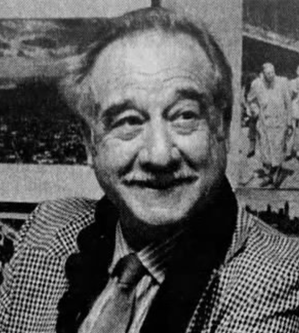
Nathaniel Fein was a photographer for the New York Herald Tribune for 33 years. He was an only child and he grew up in Manhattan New York. During the Great Depression in the United States his father left and he was raised by his mother Francis.

Earle L. "Buddy" Bunker was an American photographer for the Omaha World-Herald and one of the two winners of the 1944 Pulitzer Prize for Photography. Bunker won the Pulitzer for his photograph which he titled Homecoming.
Thomas J. Kelly III, born in Hackensack, New Jersey, is an American, Pulitzer prize-winning photojournalist. Based in greater Philadelphia, he has worked as a freelancer for electronic and print outlets since 1995. Kelly joined the staff of The Mercury in Pottstown, Pennsylvania in 1974, where he won the 1979 Pulitzer prize for spot news photography; he left The Mercury in 1989.
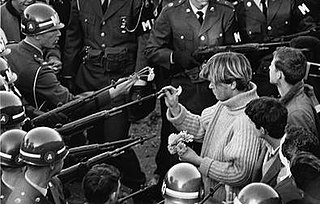
Flower Power is the title of a photograph taken by American photographer Bernie Boston for the now-defunct newspaper The Washington Evening Star. Taken on October 21, 1967, during the March on the Pentagon by the National Mobilization Committee to End the War in Vietnam, the photo shows protester George Harris placing a carnation into the barrel of an M14 rifle held by a soldier of the 503rd Military Police Battalion (Airborne).
Dick L. Swanson is an American photographer renowned for his work, particularly as a war photographer with numerous published photographs in the United States.
The Irish surname Cullinane, Ó Cuilleanáin or Ó Cuilleannáin may refer to:
James Kenneth Ward Atherton was a press photographer active in Washington D.C. for over forty years.

William C. Beall was an American Pulitzer-winning photographer. In 1957 he captured a photograph of two-year-old Allan Weaver and police officer Maurice Cullinane which he titled Faith and Confidence. The image won the 1958 Pulitzer Prize for Photography.
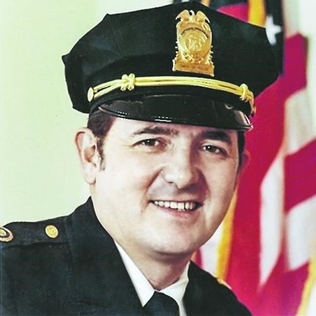
Maurice J. Cullinane was the chief of police in Washington, D.C., from December 1974 to January 1978. He was captured in a 1958 Pulitzer Prize–winning photograph titled Faith and Confidence.

Tragedy by the Sea, also known as Cruel Waves, is a photo showing a young couple, John and Lillian McDonald, standing together beside the Pacific Ocean in Hermosa Beach, California, United States. The image was captured in April 1954 by Los Angeles Times photographer John L. Gaunt. A few minutes before the image was taken, the couple's nineteen-month-old son Michael had disappeared. The photo won the 1955 Pulitzer Prize for Photography and an Associated Press Award.

Jack Ruby Shoots Lee Harvey Oswald is a 1963 photograph of nightclub owner Jack Ruby shooting accused assassin Lee Harvey Oswald. The image was captured by Dallas Times Herald photographer Robert H. Jackson and it won the 1964 Pulitzer Prize for Photography. Jackson began working for the Dallas Times Herald in 1960.

Ford Strikers Riot is a 1941 photograph which shows a strikebreaker getting beaten by United Auto Workers (UAW) strikers. Photographer Milton Brooks captured the image and it won the first Pulitzer Prize for Photography in 1942.
